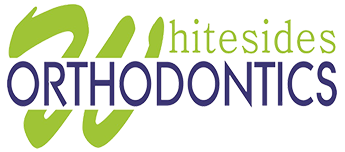Kids’ orthodontics
Pediatric orthodontist in North Port, Port Charlotte & Punta Gorda
When should a child first see an orthodontist?
As a parent, you want the best for your child. That includes healthy teeth and a pleasing smile. The American Association of Orthodontists (AAO) recommends that your child get a free consultation with a pediatric orthodontist at the first recognition of the existence of an orthodontic problem, but no later than age seven!
By then, your child has enough permanent teeth for a kids’ orthodontist to determine whether an orthodontic problem exists or is developing. Putting off a checkup with an orthodontist for kids until a child has lost all baby teeth could be a disservice. Some orthodontic problems may be easier to correct if they’re found early. A checkup no later than age seven allows our kids’ orthodontist near you, to recommend the appropriate treatment at the appropriate time. If early orthodontic treatment is in order, Dr. Whitesides, our orthodontist for kids in North Port, Port Charlotte and Punta Gorda may be able to achieve results that may not be possible once the face and jaws have finished growing.
Two-phase orthodontic treatment
What is the advantage of two-phase orthodontic treatment?
Two-phase orthodontic treatment is a specialized process that combines tooth straightening and physical, and facial changes. The purpose of two-phase treatment is to maximize the opportunity to accomplish the ideal healthy, functional, and aesthetic result that will remain stable throughout your child’s life.
Whitesides Orthodontics offers comprehensive two-phase orthodontic treatment for kids in North Port, Port Charlotte and Punta Gorda.
What to expect of two-phase orthodontic treatment
Phase One
Early orthodontic treatment
The goal of Phase One/early orthodontic treatment is to help the jaw develop in a way that will accommodate all of the permanent teeth and improve the way the upper and lower jaws fit together. Children often exhibit early signs of jaw problems as they grow and develop. An upper jaw that is growing too much or is too narrow can be recognized at an early age. If children over the age of six are found to have this jaw discrepancy, they are candidates for early orthodontic treatment. Also, if children around the age of eight have crowded front teeth, early treatment can prevent the need to extract permanent teeth later.
- Planning now can save your child’s smile later: Children benefit tremendously from early-phase treatment. Receiving early treatment may prevent the removal of permanent teeth later in life, or the need for surgical procedures to realign the jaws.
- Making records to determine your child’s unique treatment: Orthodontic records will be necessary to determine the type of appliances to be used, the duration of treatment time, and the frequency of visits. Records consist of models of the teeth, X-rays, and photographs. During your child’s free initial consultation, Dr. Whitesides will take records to determine if early treatment is necessary.
Resting period
In this phase, the remaining permanent teeth are left alone as they erupt. Retaining devices may not be recommended if they would interfere with eruption. It is best to allow the existing permanent teeth some freedom of movement. A successful first phase will have created room for permanent teeth to find an eruption path. Otherwise, they may become impacted or severely displaced.
- Monitoring the teeth’s progress: At the end of the first phase of treatment, teeth are not in their final positions. This will be determined and accomplished in the second phase of treatment. Selective removal of certain primary (baby) teeth may be in the best interest of enhancing eruption during this resting phase. Therefore, periodic recall appointments for observation are necessary, usually on a six-month basis.
Phase Two
The goal of the second phase is to make sure each tooth has an exact location in the mouth where it is in harmony with the lips, cheeks, tongue, and other teeth. When this equilibrium is established, the teeth will function together properly.
At the beginning of the first phase, orthodontic records were made and a diagnosis and treatment plan was established. Certain types of appliances were used in the first phase to correct and realign the teeth and jaw. The second phase begins when all permanent teeth have erupted, around adolescence and usually requires braces or Invisalign® Teen on all the teeth for an average of 24 months. Retainers are worn after this phase to ensure your child retains his or her beautiful smile.
What if early orthodontic treatment is put off?
Putting off early orthodontic treatment recommended by your kids’ orthodontist can result in a need for more invasive treatment later in life that may not completely fix your child’s smile. When necessary, early orthodontic treatment is most effective for achieving lasting results.
Schedule a free consultation to discover if your child can benefit from early treatment!

